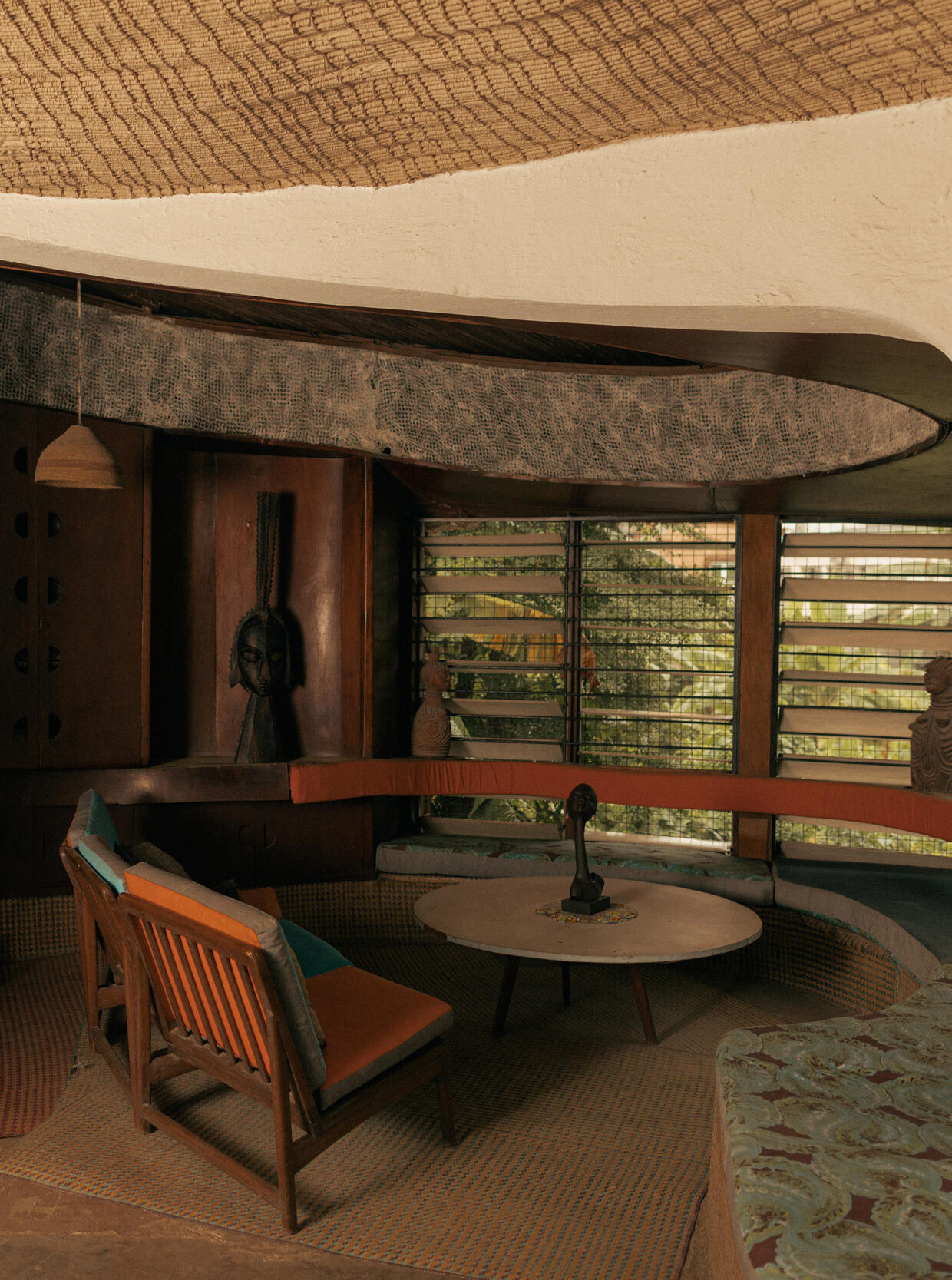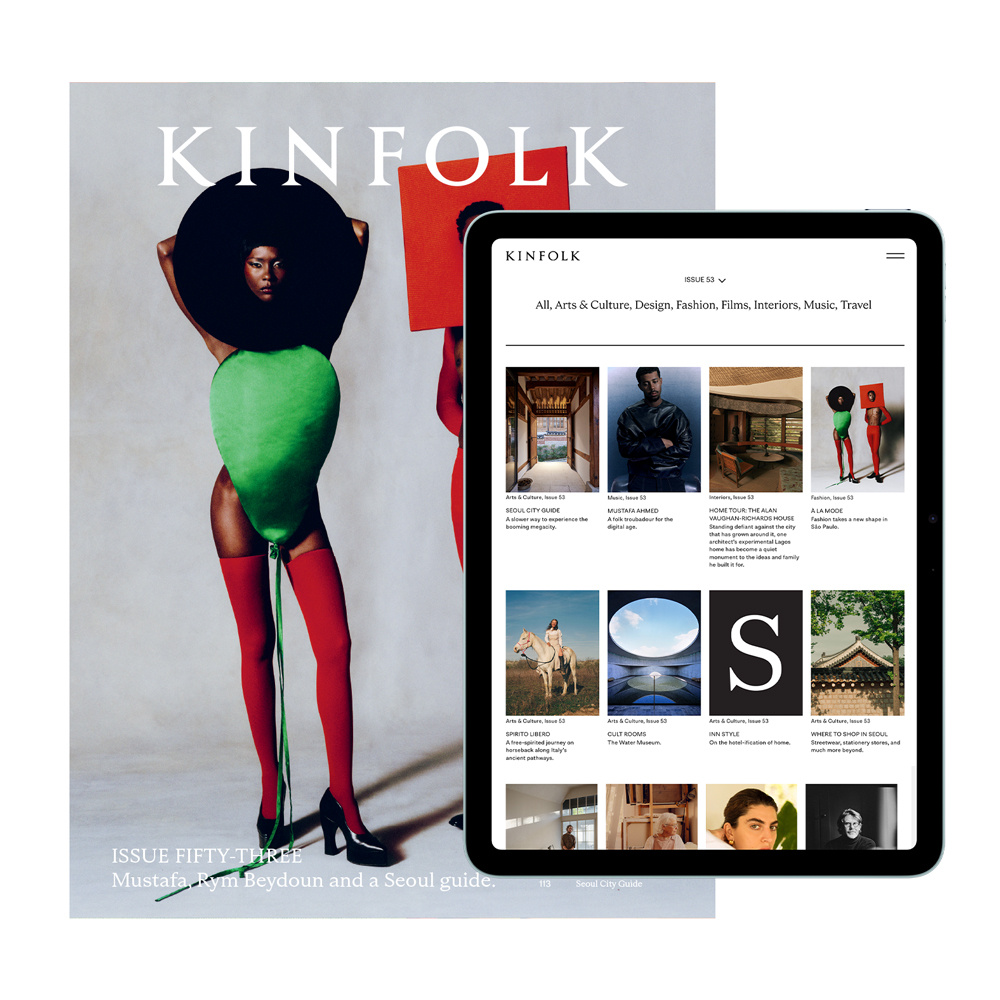
Five Seoul Neighborhoods to Explore동 네
- Words Raphael Rashid & George Upton
- Photos Hong Kiwoong
- Words Raphael Rashid & George Upton
- Photos Hong Kiwoong
Where to wander in the Korean capital.

A street in Itaewon—the name alludes to the former abundance of pear trees in the neighborhood.
TIPS 조언
ADDRESSES: Addresses in Korean are written with the largest entity first (e.g., South Korea or Seoul) and end with the street and building number. If in doubt, mapping apps will point you to the correct building—just be aware that your destination may not always be on the ground floor, or well signposted. (GU)
DINING ETIQUETTE: Koreans will typically order dishes for the table to share. Don’t be afraid to eat rice with a spoon rather than chopsticks but avoid speaking loudly and respect other people’s privacy. When it’s time to pay, do so at the counter and don’t tip—it’s considered disrespectful. (RR)
ROAMING: Before you arrive, check whether your carrier will charge you extra to use your phone in South Korea. If it does, it’s easy to find a temporary plan to use instead, which you can access by installing a physical SIM card or by downloading an eSIM. Just make sure you disable mobile data on your home service before you land. (GU)
APPS: Restrictions on foreign companies accessing geographic data mean that Apple Maps and Google Maps have limited functionality in South Korea. Korean alternatives Naver Map and KakaoMap are free to use and are available in English, though in some cases you might need to first Google a place to find its name in Korean. (GU)
GETTING AROUND: For such a big city, Seoul is surprisingly easy to get around. There’s an extensive bus network and the metro system is clean, efficient and easy to use—pay-as-you-go transport passes can be bought at stations or convenience stores. Taxis can be hailed using apps including Kakao T and Uber, but if you’re not going far, or want to explore, walking might be the best option. (GU)
Seongsu
Located just north of the Han River in the east of the city, Seongsu is undergoing a dramatic transformation. What was once a gritty industrial area is becoming increasingly trendy. On Yeonmujang-gil, the main shopping street, mechanics and hardware stores sit alongside purpose-built, high-end concept stores, pop-up shops and specialty coffee roasters, resulting in trucks facing off with well-heeled shoppers. As Seongsu’s star rises, so do concerns about gentrification and the displacement of long-term residents. The soaring rents—prime retail locations are already being booked a year in advance at weekly rates of up to $75,000—will inevitably only continue to transform the character of this traditionally hardscrabble neighborhood. (RR)
Seochon
Set against the backdrop of Inwangsan Mountain Park, the historic neighborhood of Seochon (meaning “West Village”) offers a respite from the bustling city. Popular today for its traditional hanok houses that date back to the early 20th century, Seochon was threatened with redevelopment in the 2000s and designated as a preservation area in 2010. To the east is the sprawling Gyeongbokgung Palace. Systematically destroyed during Japanese colonial rule and replaced with a government building, it became a symbol of Korea’s occupation and was itself torn down in the 1990s. The restored palace is not expected to be completed until 2045. Just outside the palace’s walls, Seochon’s quiet roads lend themselves to strolling leisurely and browsing the craft and design shops. (RR)
Itaewon & Hannam
Until recently, Itaewon was known as a foreign enclave as a result of being situated next to a sprawling US military base. The base closed in 2018 but the area remains a place where imported ideas, cultures, trends and cuisines come together. It’s home to a small but significant LGBTQ+ scene and has a thriving nightlife, with a reputation as being somewhere people can let loose away from the conservative gaze of society. Nearby Hannam—long known for its luxury housing developments and embassies—is becoming increasingly popular with Seoul’s fashionable crowd, who are drawn to the stylish boutiques, concept stores and chic cafés that have cropped up in its quiet alleyways. (RR)
Euljiro
During the day, the narrow streets of Euljiro in the center of the city are filled with the smell of ink and the clang of metalworking. But at night, those are replaced by the hubbub of people who come for the low-key restaurants and cocktail bars—their windows opened wide onto the street—or to sit in Nogari Alley to eat fried chicken and dried fish. While parts of Euljiro can feel a little dilapidated, the eclectic mix of printers, metal factories, neon-lit alleyways, art galleries and recently restored brutalist architecture make it an exciting place to be, no matter what time of day or night. (RR)
Dosan
People were still plowing fields in Dosan in the late 1970s but today, the area is known for an abundance of high-end stores, fashion brands and upscale restaurants. Dosan Park, which honors independence activist Dosan Ahn Chang Ho, forms the focal point amid the sleek shops that offer valet parking for their clients’ expensive cars. The surrounding wards—Sinsa, Apgujeong and Cheongdam in the north of the affluent Gangnam district—are also known for their luxury indulgences, as well as for the “beauty belt,” a stretch that includes hundreds of clinics and plastic surgery offices. (RR)
TIPS 조언
ADDRESSES: Addresses in Korean are written with the largest entity first (e.g., South Korea or Seoul) and end with the street and building number. If in doubt, mapping apps will point you to the correct building—just be aware that your destination may not always be on the ground floor, or well signposted. (GU)
DINING ETIQUETTE: Koreans will typically order dishes for the table to share. Don’t be afraid to eat rice with a spoon rather than chopsticks but avoid speaking loudly and respect other people’s privacy. When it’s time to pay, do so at the counter and don’t tip—it’s considered disrespectful. (RR)
ROAMING: Before you arrive, check whether your carrier will charge you extra to use your phone in South Korea. If it does, it’s easy to find a temporary plan to use instead, which you can access by installing a physical SIM card or by downloading an eSIM. Just make sure you disable mobile data on your home service before you land. (GU)
APPS: Restrictions on foreign companies accessing geographic data mean that Apple Maps and Google Maps have limited functionality in South Korea. Korean alternatives Naver Map and KakaoMap are free to use and are available in English, though in some cases you might need to first Google a place to find its name in Korean. (GU)
GETTING AROUND: For such a big city, Seoul is surprisingly easy to get around. There’s an extensive bus network and the metro system is clean, efficient and easy to use—pay-as-you-go transport passes can be bought at stations or convenience stores. Taxis can be hailed using apps including Kakao T and Uber, but if you’re not going far, or want to explore, walking might be the best option. (GU)



